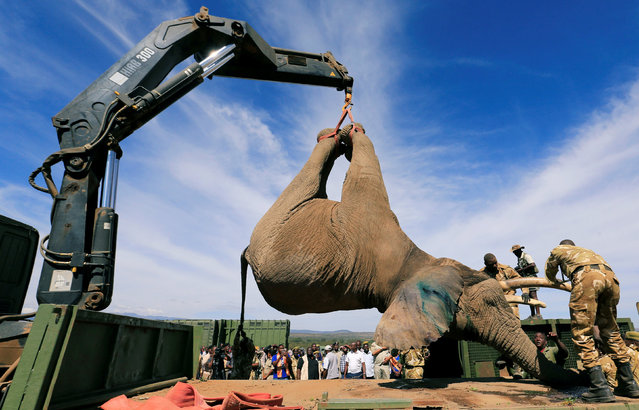
Kenya Wildlife Service (KWS) rangers load a tranquillised elephant onto a truck during a translocation exercise to Ithumba Camp in Tsavo East National Park, in Solio Ranch in Nyeri County, Kenya February 21, 2018, amid threats from poaching and habitat loss. (Photo by Thomas Mukoya/Reuters)
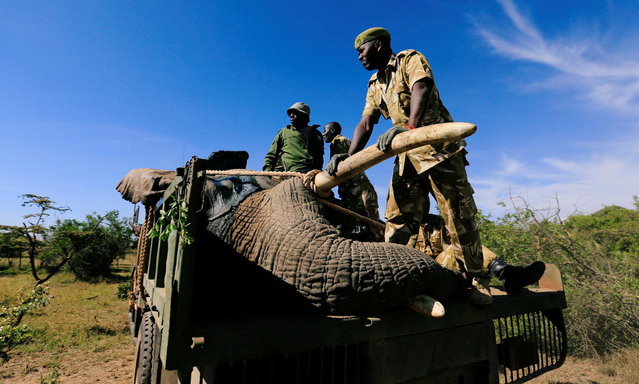
Kenya Wildlife Service (KWS) rangers load a tranquilized elephant onto a truck during a translocation exercise to Ithumba Camp in Tsavo East National Park, in Solio Ranch in Nyeri County, Kenya February 21, 2018. The ranch and the surrounding Lamuria region, home to about 300 elephants, forms part of a migration corridor for the pachyderms between the parks in the country's Mount Kenya and Aberdare mountain ranges. (Photo by Thomas Mukoya/Reuters)
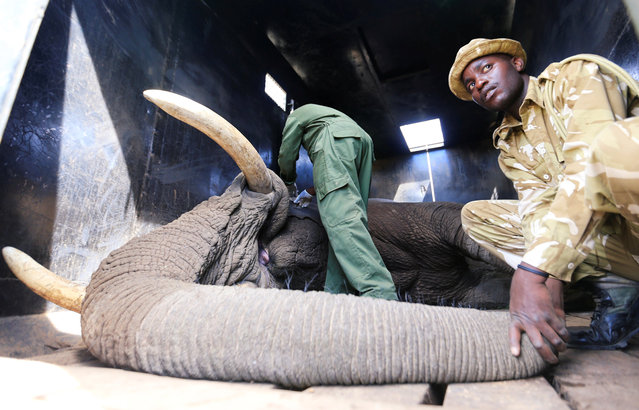
A Kenya Wildlife Service (KWS) veterinary monitor the breathing of a tranquilized elephant during a translocation exercise to Ithumba Camp in Tsavo East National Park, in Solio Ranch in Nyeri County, Kenya February 21, 2018. (Photo by Thomas Mukoya/Reuters)
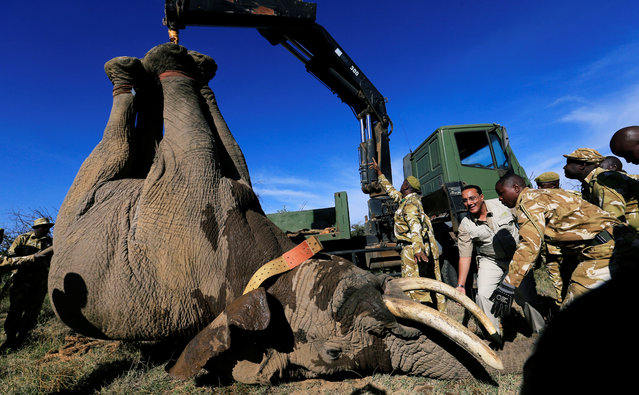
Kenya's Cabinet Secretary for Tourism Nabjib Balala (C) and Kenya Wildlife Service (KWS) rangers load a tranquilized elephant on to a truck during a translocation exercise to Ithumba Camp in Tsavo East National Park, in Solio Ranch in Nyeri County, Kenya February 21, 2018. Kenya has several thousand elephants, who face threats such as ivory poachers and habitat loss, but they often raid crops and farms as they migrate between parks, angering villagers who rely on the produce to feed their families. (Photo by Thomas Mukoya/Reuters)
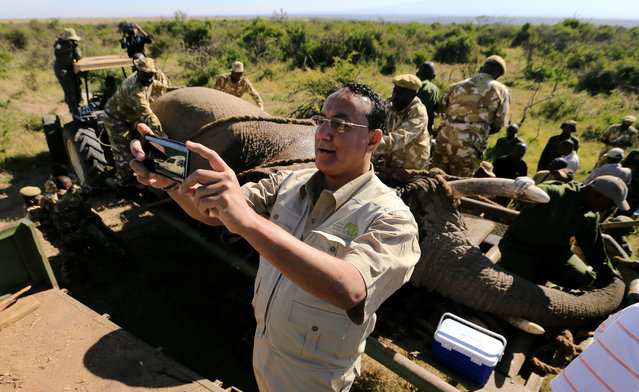
Kenya's Cabinet Secretary for Tourism Najib Balala takes a selfie during a translocation exercise to Ithumba Camp in Tsavo East National Park, in Solio Ranch in Nyeri County, Kenya February 21, 2018. Veterinary officers drew blood samples from the elephants for health screening and recording purposes, besides fitting the monitoring collars that give rangers early warnings if the animals stray too close to human habitation. (Photo by Thomas Mukoya/Reuters)
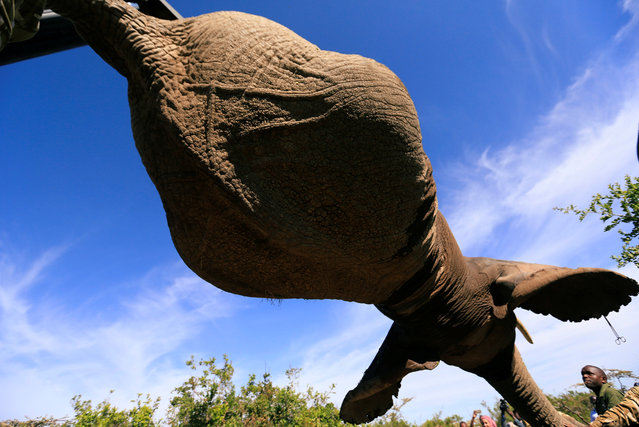
Kenya Wildlife Service (KWS) rangers load a tranquilized elephant onto a truck during a translocation exercise to Ithumba Camp in Tsavo East National Park, in Solio Ranch in Nyeri County, Kenya, February 21, 2018. Wildlife officials in Kenya kicked off a relocation operation for 30 elephants, fitting monitoring collars on the tranquilized animals before using cranes to swing them, inverted with bound feet and scything tusks, onto flatbed trucks. (Photo by Thomas Mukoya/Reuters)

A Kenya Wildlife Service (KWS) veterinary monitors the breathing of a tranquilized elephant during a translocation exercise to Ithumba Camp in Tsavo East National Park, in Solio Ranch in Nyeri County, Kenya February 21, 2018. The Kenya Wildlife Service has said elephant numbers have rebounded from a low of 16,000 in 1989, when the world conservation body CITES banned sales of ivory from African elephants. Kenya's Wildlife Service was set up a year later. (Photo by Thomas Mukoya/Reuters)
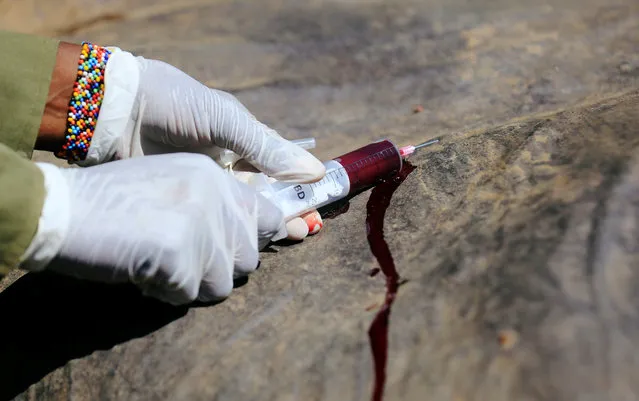
A Kenya Wildlife Service (KWS) veterinary takes blood samples of a tranquilized elephant during a translocation exercise to Ithumba Camp in Tsavo East National Park, in Solio Ranch in Nyeri County, Kenya February 21, 2018. (Photo by Thomas Mukoya/Reuters)
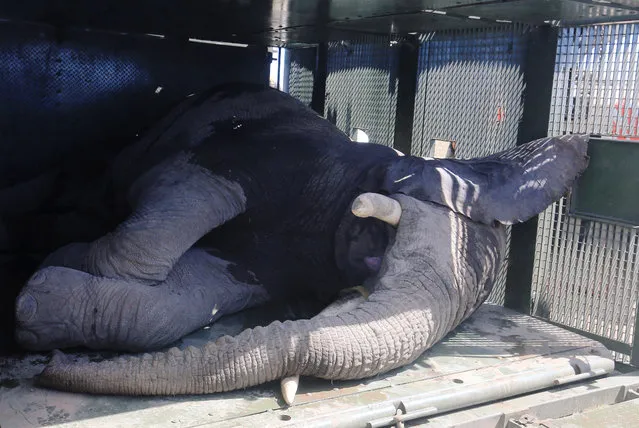
A tranquilized elephant is seen in a cage during a translocation exercise to Ithumba Camp in Tsavo East National Park, in Solio Ranch in Nyeri County, Kenya February 21, 2018. (Photo by Thomas Mukoya/Reuters)
23 Feb 2018 00:04:00,
post received
0 comments
